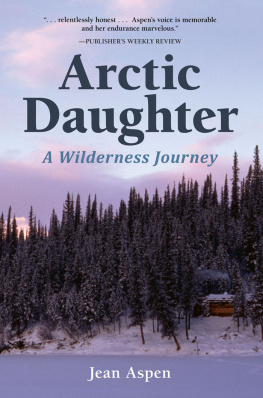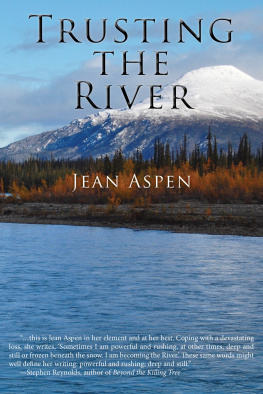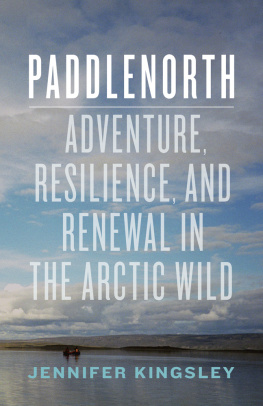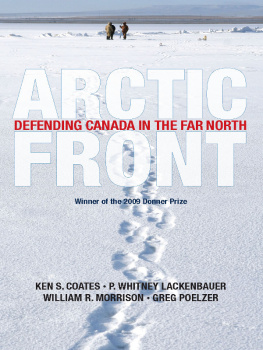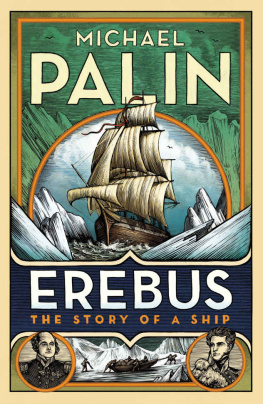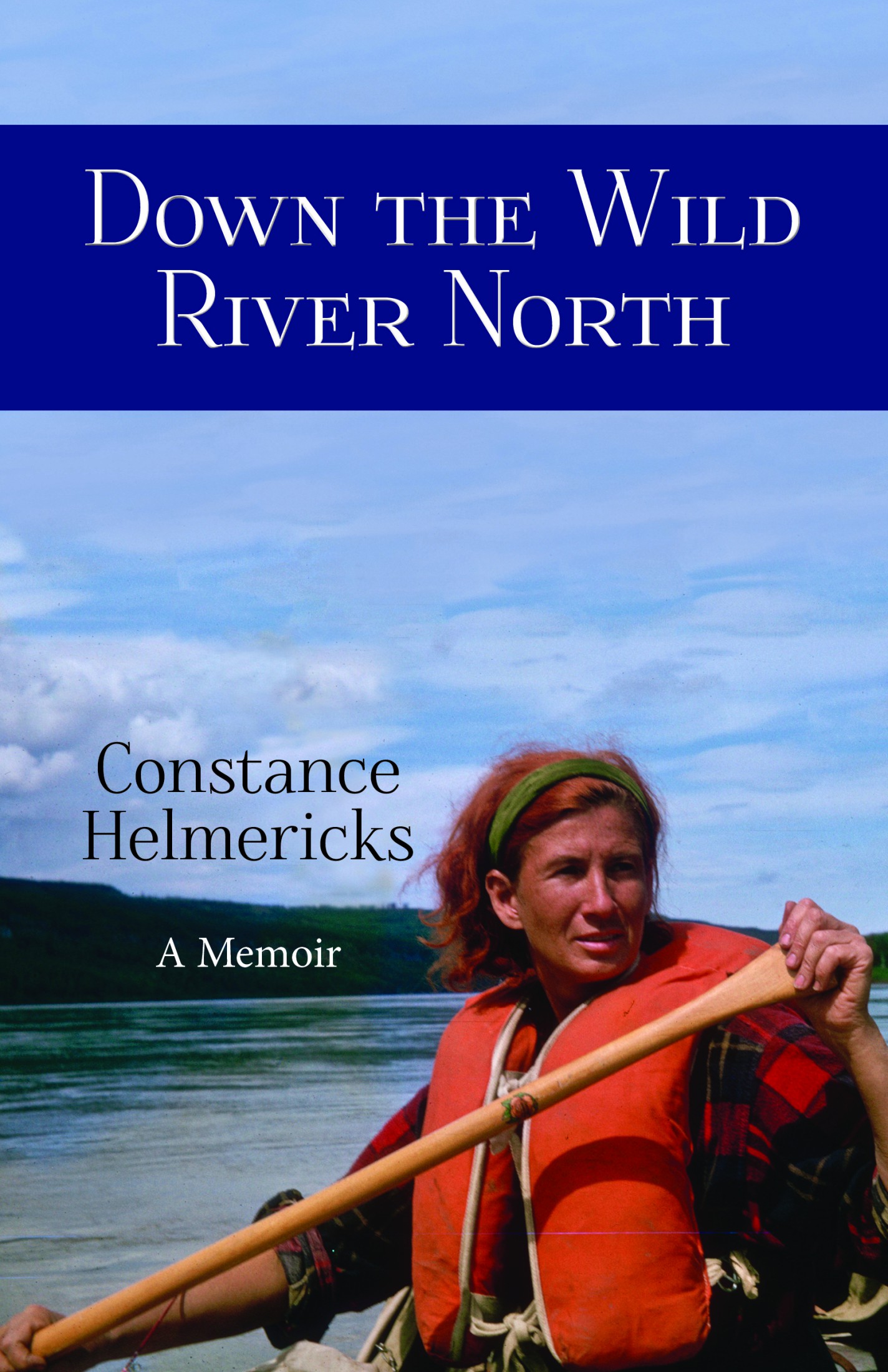Down the Wild River North
Constance Helmericks
Epicenter Press is a regional press publishing nonfiction books about the arts, history, environment, and diverse cultures and lifestyles of Alaska and the Pacific Northwest.
For more information, visit www.EpicenterPress.com
Text 2017 Constance Helmericks
Cover images courtesy of Jean Aspen
Cover and interior design: Aubrey Anderson
All rights reserved. No part of this publication may be reproduced, stored in a retrieval system, or transmitted in any form by any means, electronic, mechanical, photocopying, recording, or otherwise, without the prior written permission of the publisher. Permission is given for brief excerpts to be published with book reviews in newspaper, magazines, newsletters, catalogs, and online publications.
Originally published by Little, Brown and Company in 1969. A condensed version of the original edition was published by Bergamot Books in 1989 and Seal Press in 1993.
SMASHWORDS EDITION
Ebook ISBN: 9781935347897
ISBN: 9781935347798
Library of Congress Control Number: 2017941682
Books by Constance Helmericks
Down the Wild River North , 1968, 1989, Epicenter Press 2017
Flight of the Arctic Tern , 1952, Epicenter Press 2018
We Live in the Arctic , 1947, Epicenter Press 2018
Our Summer with the Eskimos , 1949, Epicenter Press 2018
Our Alaskan Winter , 1950, Epicenter Press 2019
We Live in Alaska , 1944, Epicenter Press 2019
Hunting in North America , 1956
Australian Adventure , 1972
Books by Jean Aspen
Arctic Daughter: a Wilderness Journey , 1988, 2015
A Child of Air (a novel), 2008
Arctic Son: Fulfilling the Dream , 1995, 2014
Trusting the River , Epicenter Press 2017
Companion documentaries by Jean Aspen and Tom Irons
Arctic Son: Fulfilling the Dream , 2012
Arctic Daughter: A Lifetime of Wilderness , 2018
Rewilding Kernwood , 2019

Wild children, Jean and Ann
Introduction
When the idea came to Connie Helmericks to take her two young daughters on a canoe trip to the Arctic, she was fulfilling dreams from her earlier life, when she spent twelve years exploring the Alaskan Arctic.
In 1941, at the age of 23, Connie left Tucson, Arizona, with her newlywed husband, Harmon Bud Helmericks, for life in Alaska. Says her daughter Jean: When my parents first went to Alaska, it was probably my mothers idea. She was always the wild one, the hiker, the adventurer, doing the sort of things most people wouldnt think of doing.
They spent their first three years in Seward and then built a canoe to explore the Koyukuk and Colville Rivers far up into the Arctic, living part of the time with Eskimos. They became famous with the publication of a series of books about their adventures written by Connie and a cover story in LIFE magazine in 1947.
In 1950, shortly before Jean was born, Connie returned to Arizona. A few weeks later she went back to Alaska, and Jean spent the first three years of her life in a cabin on the Alatna River. Shortly after Anns birth the Helmericks were divorced, and Connie and her daughters returned to Arizona for good.
Connie lived a busy life in Arizona, trying to support her two daughters with teaching and research jobs, becoming involved in local environmental issues, and continuing to write. But she never forgot the North and was always restless to return, impatiently waiting until the girls were old enough to go exploring with her. Ten years after leaving Alaska she got an advance from her publisherLittle, Brown & Companyand took her daughters on the journey she describes in Down the Wild River North .
Barbara Wieser, Editor
Foreword
Im not sure I really knew my mother; I dont believe anyone did. Behind her flamboyant proclamations dwelt a very private person. Constance Helmericks was a paradox: a timid dreamer who was courageous but incredibly nave. At home in both the natural world and the limelight, she painted with a colorful wit that did not spare herself. Connie was so tenderhearted that she put spiders outdoors, calling them little hunters, but suppressed affection for her children, my sister Ann and me, preferring fond pats to hugs. She was deeply sentimental and got choked up while reading aloud to us, and although she unabashedly viewed motherhood as drudgery, her passion to show us beauty, wilderness and authentic experience has guided both our lives.
Born Constance Chittenden into an educated family a century ago, Connie was a wild spirit in an age of stilted female roles. One cannot judge her with a twenty-first century mind. Never one for conflict, she learned in early childhood to escape rather than confront those in powerevading nannies and her abusive father by climbing onto the roof and down the tree beyond her bedroom window, to roam the woods of upstate New York. She soon discovered Emerson, Thoreau, Whitman, Longfellow, and Wordsworth and began writing poetry. She met our father, Bud Helmericks, while attending the University of Arizona, and enrolled this strong and handsome youth in her fantasies of Alaskan wilderness. They were married in May 1941 and embarked for the North the same afternoon. My grandmother paid her passage.
Connie supplied the imagination and erudition while Bud provided the strength and physical skills that would make them a powerful team. During their twelve years together, his controlling oversight eroded her confidence, and her main tools remained the written word and safety pins. Although Connie included Buds name on her bookseven writing one from his perspectiveshe was the sole author. With the publication of her first book, We Live in Alaska , about their prolonged journey down the Yukon River in a homemade canoe, they were thrust into public acclaim. Her next three works spanned their 27-month trek from the Brooks Range to the Arctic Ocean by foot, canoe and dogsled. This astounding odyssey culminated on the Mackenzie River delta in Canada, where gazing across that vast expanse of moving water, she began to dream of floating this wild river from its headwaters to the sea.
A tireless promoter, Connie soon parlayed their growing fame into sponsors for cameras, equipment, and their first airplane. By 1947 they were filming documentaries, and between months in the wilderness, traveled the nation on lecture tours where she spoke before thousands with Bud on stage beside her. Their photographs and story were twice featured with lengthy spreads of LIFE Magazineincluding once on the cover. Her fifth book, Flight of the Arctic Tern , recounts pioneering across the vast Arctic in their small Cessna-140, as they filmed their adventurous lives and the indigenous people of the far North.
I was born in 1950, followed a brief eighteen months later by Annie. In a letter our father wrote to Connie while she awaited my birth in Arizona, he declared that children would not change their lives. Indeed, they soon returned with me to the Arctic and filmed Jeanie of Alaska , leaving my infant sister with Buds parents in Colorado. Between the lecture circuit, the clamor for more books, parenthood, and the complexities of her edgy relationship, Connies dream was unraveling.
In the spring of 1953 she finally gathered courage to leave Bud. Taking little but her two toddlers, Connie returned penniless to her mothers Arizona home. Here, she completed her degree in sociology and even got a teaching certificate, but ultimately could not force herself into a domestic harness, preferring to livepoor and often frightenedby her creative wits. My earliest memories are the tapping of her typewriter as I napped through the Tucson heat. Battling like a caged bird, she struggled to rekindle her writing career and return to the natural world that she loved. Somehow, she never lost that dream, and as Annie and I grew, she envisioned the three of us setting out on a wilderness adventure. One of the hundreds of letters she wrote convinced her publisher, Little, Brown and Company, to front money for this audacious and quixotic journey.


